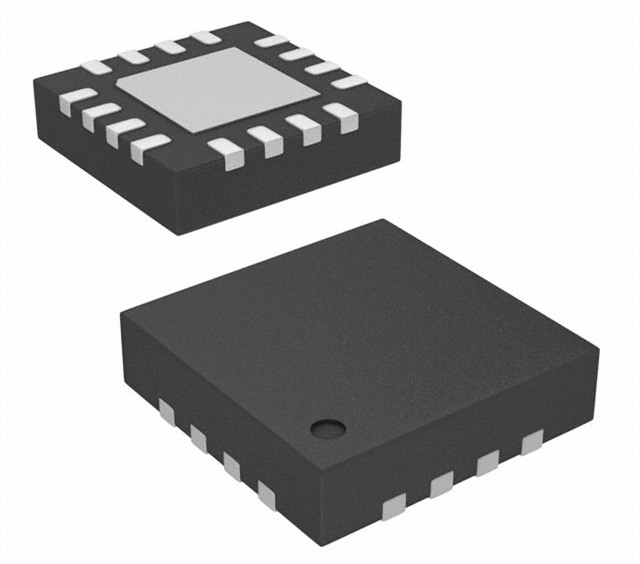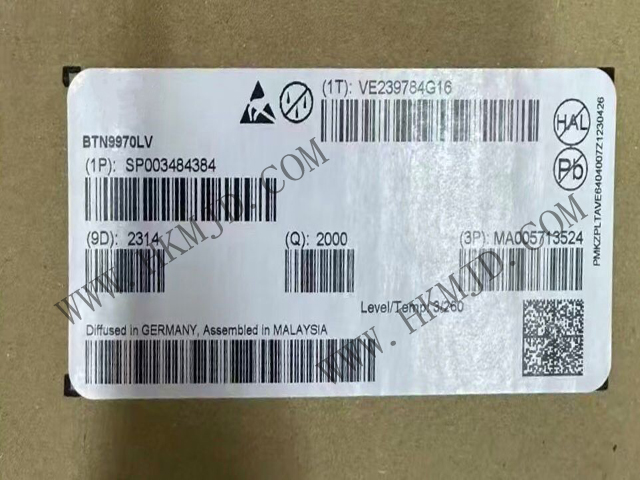Welcome Here Shenzhen Mingjiada Electronics Co., Ltd.

sales@hkmjd.com

sales@hkmjd.com

Service Telephone:86-755-83294757
 Latest Information
Latest Information Home
/Industry Information
/
Home
/Industry Information
/
Server-grade Chips Enter Embedded Market, AMD EPYC This Processor Rides the AI Flood
AMD has announced the expansion of its x86 embedded processor line with the fifth generation of AMD EPYC Embedded processors.Optimised for the embedded market, the AMD EPYC Embedded 9005 family of CPUs balances computing power with purpose-built embed…
AMD has announced the expansion of its x86 embedded processor line with the fifth generation of AMD EPYC Embedded processors.
Optimised for the embedded market, the AMD EPYC Embedded 9005 family of CPUs balances computing power with purpose-built embedded features to enhance product longevity, system resilience and ease of embedded application development.
Featuring the proven Zen 5 architecture, the processor delivers leading-edge performance and power efficiency, enabling networking, storage and industrial edge systems to process more data, faster and more efficiently.
Artificial Intelligence Workload Driven, Embedded Computing Upgrade
Why AMD is targeting the embedded market with the EPYC Embedded 9005 series of CPUs is that it sees three main trends in the future of embedded computing.
Tarang Shah, Senior Product Manager, Embedded x86 Product Management at AMD, resolves that there has been a significant increase in network traffic due to artificial intelligence, workloads and application drivers, which has also dramatically increased the demand for data processing. Some research organisations have predicted a 120 per cent increase in network traffic over the next five years, driven by AI workloads, which will require high throughput, low latency, and very energy-efficient technologies for data processing and transmission.
Meanwhile traffic growth is also driving data storage demand, which has grown by 20 per cent in five years and this trend is set to continue. Data storage is not only about scaling up, but also about optimising how data storage is accessed and so on, so that the data storage system can perform real-time data analysis and computation. As a result, higher requirements for I/O connectivity, computing power, etc. are required.
In addition, the industrial edge is experiencing an explosion in computing demand. Data must be processed in real-time in industrial environments. For example, many sensors and edge devices need to process massive amounts of data locally to support real-time decision-making, which puts higher demands on computing performance and energy consumption.
Three key features of AMD EPYC Embedded 9005
The embedded features supported by the AMD EPYC Embedded 9005 family of CPUs fall into three main categories, namely extended lifecycle, system resiliency and security, and application development simplicity.
Among these, support for extended product lifecycles up to seven years, which avoids the need for repeat designs and better protects customer investments. At the same time, the reliability and durability of the product is maintained so that it can have more reliable operational performance throughout the extended life cycle.
Embedded applications require higher system availability and data retention, so the AMD EPYC Embedded 9005 series CPUs have added many features, including NTB (Non-Transparent Bridging), DRAM Flush, Dual SPI (Dual Serial Peripheral Interface), and more. One of the NTB features improves system availability, and having higher redundancy ensures a fault-tolerant, multi-group configurable system. In addition, DRAM Flush can retain data even when there is a power failure. There is also Dual SPI, which means that customers can perform a secure bootloader, validating the platform in the process to ensure that the execution environment is trustworthy and secure.
It also has a very simplified application development process, such as support for the Yocto framework, and also DPDK/SPDK, which is the Data Plane Development Kit and the Storage Performance Development Kit. There are also quarterly releases with a wide range of validations to accelerate the time to market for applications.Software support for Yocto, DPDK/SPDK, etc. is unique to this processor.
The Yocto framework is a widely used framework that enables customers to make custom Linux configurations that more closely match the needs of their software applications.The DPDK/SPDK can greatly improve system performance by allowing data processing to be done in user space rather than in kernel space.
Significant Arithmetic and Energy Efficiency Advantages
The AMD EPYC Embedded 9005 family of processors is designed to support compute-intensive embedded systems ranging from 8 to 192 cores in a single socket. Their industry-leading core densities provide up to 1.3x and 1.6x data processing throughput improvements for networking and storage workloads, respectively, making them ideally suited for network and security firewall platforms, storage systems and industrial control applications.
In firewalls, for example, as network traffic is now getting higher, higher throughput allows the processor to go to larger packets in real time without slowing down the traffic. In addition the storage controller can also reduce the read and write times required to write to storage memory in a higher throughput environment.
The new Zen 5c core architecture delivers higher throughput and better energy efficiency, with an estimated 1.3x improvement in single-socket throughput and 1.3x improvement in performance/power ratio over the competition.
In terms of I/O connectivity, up to 6TB of DDR5 memory capacity per slot and extended I/O connectivity with support for up to 160 PCIe Gen5 lanes and CXL 2.0 enable storage capacity expansion and high-speed data transfers for networking and storage applications.
In addition, the processor is able to work with GPUs and FPGAs. For example, in terms of large language model processing, the AMD EPYC Embedded 9005 plus the GPU can be a host processor, with the CPU passing the data to the AMD GPU to do the inference of the large language model. And AMD's FPGA can assist with logic control and so on while the EPYC Embedded 9005 is in a low power state.
It can be seen that AMD EPYC Embedded 9005 series not only has the excellent computing power of server-grade chips, but also meets the needs of embedded applications in various aspects such as long life, system resilience and security. It is reported that AMD Epyc Embedded 9005 series processors are currently sampling to early customers and are expected to begin mass production shipments in the second quarter of 2025.
![[Supply] OPA2991SIRUGR (TI) 40V Dual Channel Low Noise Operational Amplifier](/upload/202508/16/202508161217045262.jpg)
Time:2025-08-16

Time:2025-08-16

Time:2025-08-16

Time:2025-08-16
Contact Number:86-755-83294757
Enterprise QQ:1668527835/ 2850151598/ 2850151584/ 2850151585
Business Hours:9:00-18:00
E-mail:sales@hkmjd.com
Company Address:Room1239, Guoli building, Zhenzhong Road, Futian District, Shenzhen, Guangdong
CopyRight ©2022 Copyright belongs to Mingjiada Yue ICP Bei No. 05062024-12

Official QR Code
Links: